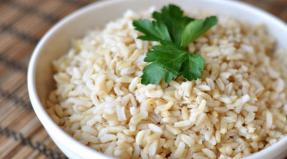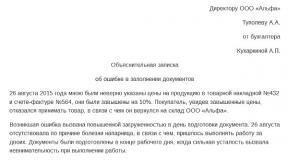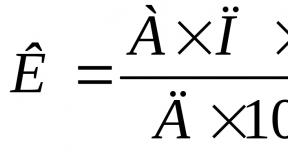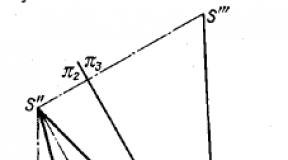Harris Benedict formula online calculation of daily energy costs. TDEE Calculator: Calculate calorie intake based on physical activity level. Formula principle Harris-Benedict formula
Even when we rest, our body needs energy for the normal functioning of all organs. Calories are spent on the work of the heart, lungs, blood circulation through the vessels and even on sleep.
Factors Affecting Calorie Calculation
And in the event that you do not burden yourself with physical exercises, you still need to consume a sufficient number of calories per day.
There are several factors that affect the calculation of calories during rest:
- Gender: Women need fewer calories per day than men.
- Age: Children consume more calories than an elderly person, as the child's body is constantly growing and needs additional energy.
- Height and weight: the fuller a person, the fewer calories he needs, since the body must use up internal resources.
- Muscle Mass: Your body needs more calories to build muscle.
For a pregnant woman or for a patient, the calculation of calories should be done individually.
Metabolic calorie intake changes throughout a person's life. At the beginning of the last century, the Harris-Benedict formula was derived to calculate basal metabolic calories. What it is? Now let's figure it out. The Harris-Benedict formula is the most accurate to date and is used in calculating metabolism.
The advantage of such calculations is that it gives the result individually for you.
The Harris-Benedict formula will help you calculate calories if you decide to lose weight. With it, you can calculate how much you need to reduce the level of daily food intake.
Physical activity level
How are calories calculated using the Harris-Benedict formula? More on this later. Now let's look at the important factors.
To begin with, let's try to determine the daily dose of calorie intake to maintain our weight. This calculation takes into account additional physical activity, how much food you consume throughout the day. In order to derive the required coefficient, you need to determine the level of your physical activity. After that, it should be multiplied by the daily calorie requirement (BMR).

It is calculated separately for men and women. The level of physical activity has its own classification. It is divided into five points:
- Low or no exercise at all equals 1.2 multiplied by your individual BMR.
- Low activity. It is determined by the number of workouts in one week. On average, this coefficient ranges from one to three workouts and is 1.375. This figure is also multiplied by your BMR.
- The moderate level of activity is determined by three, five workouts and is equal to 1.55.
- High activity level - ranges from six to seven workouts per week. It equals 1.725.
- The extreme activity level is determined by two workouts per day and equates to 1.9.
Now consider the formulas for calculating the BMR coefficient for both sexes.
For girls
How is the Harris-Benedict formula for women calculated? Now let's figure it out. For the beginning of the day, consider the formula, which was derived at the beginning of the last century.

To do this, we take the old unit, which is 655. To it we add the weight in kilograms, multiplied by another old unit 0.563. After that, we add to it one more unit 1,850 multiplied by growth. From the resulting amount, it is necessary to subtract the coefficient of age multiplied by 4.676. This will be your BMR number.
But today, the Harris-Benedict formula, for both women and men, has been somewhat modified. They brought out a new one back in 1984, as some medical indicators have changed in sixty years. And, accordingly, the calculations in the formula have been changed. The weight in kilograms must now be multiplied by 9.247. Height in centimeters - already at 3.098, and age - at 4.330. The total figure, instead of 655, will now be 447, 593.
For men
Now consider how the Harris-Benedict formula for men is considered. Initially, it looked the same as for women. The only thing is that the coefficients are somewhat different. To 665 we add the weight in kilograms multiplied by 13.75, plus the height in centimeters multiplied by 5.003. Then we subtract the age multiplied by 6.755.
The modified Harris-Benedict formula for men is as follows:
The overall odds are now 88.392. To this is added weight times 13.397 plus height in centimeters times 4.779 and subtracts age times 5.677.
Harris-Benedict formula for student children and infants
When calculating the basal metabolic rate for children, their age must be taken into account.

If the child is not yet one year old, you need to add body weight multiplied by 34.661 to -74.436. Then you need to add the heart rate per minute, multiplied by 0.496. To the resulting figure, we add the age in days, multiplied by 0.178.
Now consider the formula that calculates the level of the main amount of calories consumed for children from one year and older. We multiply all the coefficients in it - the injury factor, the thermal factor, the actual amount of energy, the main energy exchange in a resting situation, the deficit in body weight from the recommended one.
Flaws
The Harris-Benedict calorie formula, in addition to its advantages, has its drawbacks.
First, the calculations may be inaccurate, as they do not take into account the genetic characteristics of each organism. In addition, many people often overestimate the coefficient of their activity. This leads to the opposite result. That is, in this case, you just start to gain weight. To prevent this from happening, try to evaluate your physical activity as close to reality as possible.

After the research, American scientists found that the Harris-Benedict Formula is 90% reliable. This, of course, is a good result, but do not forget about the remaining 10%.
And it is also important to take into account that throughout the process of losing weight, the coefficient will change. Since your weight will decrease, accordingly, the total coefficient (OO) will also change.
The problem of excess weight worries many people in the modern world. Everyone asks the question: "How to lose weight without diets and exercise?" The answer has long been known: it is practically impossible. If a person does not want to change something in his diet and lifestyle, then nothing will work. But dieting will not help your body stay healthy in any way, and all the lost kilograms will not only return, but will lead to even more weight gain. The way out is very simple - proper nutrition and
Calorie content
Any food that enters our body is a source of energy for it. Its quantity is usually measured in kilojoules or kilocalories. If a person eats too much food, then the excess energy is converted into and deposited evenly throughout the body until the time when it is needed. If, on the contrary, starvation occurs, these fatty tissues are consumed for normal human life. Thus, each person should consume such an amount of food, the energy from which would be equal to the energy expended throughout the day. In this case, neither its decrease will occur. Therefore, the calculation of the norm of calories is so important. If you establish its deficiency, then you can safely lose weight and not feel a negative effect on the body.
To date, there are formulas that can very accurately show how much energy an individual person needs to consume. The calculation of the calorie norm is carried out according to simple indicators, such as weight, height and age. Also here it is worth adding the level of physical activity. In order to calculate exactly how many calories you need, you can use equations such as the Harris-Benedict formula or, more recently, the Mifflin St. Jeor formula.
The concept of the main exchange

Basal metabolism is the level of energy expenditure in the body that is inherent in a person in a calm state. After all, even if you don’t move, but, for example, just sleep, many processes are constantly going on in our body that we don’t even think about. These include respiration, the functioning of the cardiovascular system, the production and reproduction of new skin cells, blood and their replacement, the growth of nails and hair, as well as millions of other chemical reactions. Each of them requires a constant expenditure of energy throughout life. The calculation of the norm of calories will provide a person with an understanding of what he needs for a full existence. Many factors affect basal metabolism. In children, for example, it is higher, since they are in constant growth. And the elderly are lower, because they are slowed down. Gender and physical condition also affect this indicator. For example, if a woman is breastfeeding a child, then she spends much more calories than in normal life.
according to the Harris-Benedict formula

One of the two most common equations to help you calculate your basal metabolic rate is the Harris-Benedict formula. It shows the caloric content of the diet not for weight loss, but only to maintain the weight that is currently available. This formula is suitable for people who do not exercise systematically, because bodybuilders, for example, have very different needs. As mentioned above, the need for calories is different for different genders, so the formulas for them are slightly different.
The Harris-Benedict formula for women is: 655.1 + (9.6 × body weight in kg) + (1.85 × height in cm) - (4.68 × age in years). This will help any non-active woman know how much she needs to consume to maintain her existing weight.
The Harris-Benedict formula for men looks like this: 66.47 + (13.75 × body weight in kg) + (5 × height in cm) - (6.74 × age in years).
Basal metabolism according to the Mifflin St. Jeor formula

The second equation that will help you calculate your basal metabolic rate is the Mifflin St. Jeor formula. It is considered more reliable, since the Harris-Benedict formula was derived back in 1919, and the pace and rhythm of the life of ordinary people has changed a lot since then. This led to the fact that she has an error of about 5%. There is no such thing in the Mifflin St. Jeor equation, since it was developed in 2005 and is more focused on the modern person. It is also divided by gender.
For men: (10 × weight in kg) + (6.25 × height in cm) - (5 × age in years) + 5.
For women: (10 × body weight in kg) + (6.25 × height in cm) - (5 × age in years) - 161.
After this coefficient is calculated, it is also necessary to determine the degree of physical activity of a person. A certain activity is indicated by a number from 1.2 to 1.9. Therefore, the basal metabolic rate, which has already been calculated, is multiplied by the degree of activity. This helps to more accurately determine how much energy is needed for your body.
Benefits of formulas
If a person is concerned about his health and wants to keep himself in a certain shape, the Harris-Benedict or Mifflin St. Jeor formula will be a good helper for him. After all, when you know your basal metabolism, you can decide how many calories to consume. If you're happy with your weight but don't want to put on the pounds, just don't consume excess energy. If you want to lose weight, then simply create a deficit in the norm of calories, and your body will begin to compensate for it from internal reserves.

Thus, knowing your basal metabolism will greatly help those who want to lose weight. Calculating it is easy if you choose one or both of the options. It should be borne in mind that the Harris-Benedict formula will be older and less useful. The calculator, of which there are many options and they are available, will do all the complex calculations for you.
The diet should be pleasant, but why are the supporters of the abbreviation healthy lifestyle more often associated with sectarians or just eccentric people? After all, it seems so unnatural to lead a “natural” lifestyle and refuse tasty, sweet, fried or starchy foods.
The belief that health and a beautiful body must be earned, and for being overweight, it’s enough just to relax. Already in the 70s. outlined a multi-billion dollar market of people seeking to see the desired result in the mirror with the least loss. But, is the diet really supposed to be different from the usual diet and feel so unnatural in your diet? The method is currently applicable only to those people who lead an active lifestyle.
The question of the optimal diet for a person became interested long before the emergence of a huge market for weight loss. One example of this attention is the Harris-Benedict Equation, whose problems have been developed in the Mifflin-Jeor Equation, as well as in the Katch-McArdle and Cunningham equations.
The main subject of interest in these equations is the level of calories consumed to sustain life. Thus, the amount of energy in calories that must be consumed to maintain the previous form is measured. The former form is understood as the state of the body at the time of the measurements - it does not matter whether it is overweight, or vice versa, needs to gain mass.
This energy level is referred to as the basal metabolism or basal metabolic rate (BMR: Basalmetabolicrate). Having determined it, we get the number of calories consumed at rest to maintain body temperature, organ function and maintain muscle mass and body fat.
The level of BMR falls with age and a decrease in the mass fraction of fat. However, aerobics and fitness do not affect it, as was commonly believed, which was proven by a direct correlation study in 1990. But this does not apply to anaerobics, due to oxygen-free energy synthesis, in which the BMR level also changes.
This type of activity deals mainly with exercises with a short burst of activity, such as sprinting, swimming short distances and isometrics.
The exact value of BMR is examined at absolute rest by calorimetry, the approximate principle of which is to measure the ratio of outgoing heat with the absorption of oxygen and the production of carbon dioxide. But the mentioned formulas can provide an approximate value using height, weight, sex and age.
The BMR level provides a basis for planning diet and exercise, avoiding shock to the body. The misperception of sports and dietary foods as absolute health benefits at any given time and at any dose often causes a whole host of problems. Before you wonder about changing your body, you should understand that it is ideal.
The body is the answer to an equation where nutrition, lifestyle, genetics, ecology, etc. play a big role. It always adapts to the proposed load and power conditions, but, being inert, it is not able to adapt to sudden changes without loss.
So, to calculate BMR, you need to know height, weight, gender and age. The formula, developed by botanist James Arthur Harris and nutritionist Francesco Gano Benedict at the Carnegie Institution in 1919, is as follows:
BMR = 6.0 + (3.6 x weight in kg) + (5.3 x height in cm) – (6.0 x age)
BMR = 5.5 + (9.4 x weight in kg) + (1.6 x height in cm) – (4.6 x age)
But in 1984, the development of nutrition allowed the researchers A. M. Rose and H. M. Shitsgal to revise and refine the old equation:
BMR = 8.2 + (3.7 x weight in kg) + (4.9 x height in cm) - (5.7 x age)
BMR = 7.3 + (9.7 x weight in kg) + (3.8 x height in cm) - (4.0 x age)
It is worth noting that the formula is not practical in cases of extremely overweight, where it overestimates the number of calories required, and abnormally large muscle mass, where the calorie level will be underestimated. In other cases, i.e. For the most part, the equation satisfies everyday requirements.
Passive lifestyle:
Charging up to 3 times a week:
Fitness up to 5 times a week:
Sports, 6-7 times a week:
Professional sports, twice a day:
From the formula, a clear relationship between exercise and nutrition is obvious, which allows you to choose the best balance between activity level and diet for weight change.
So, say, by reducing the amount of calories consumed by 20%, and not changing the level of activity, the weight will drop in a week, since the BMR will be replenished with energy reserves in the fat layer.
Thanks to the ability to individually calculate the daily calorie intake, the main application of BMR and the Harris-Benedict formula was found in the section of nutrition, specifically among personal weight loss programs.
The first changes in the diet should not be made with a difference of more than 20-30% of calories. About 70% of the energy is spent on maintaining the functioning of the body, half of which is consumed by the liver and brain. Therefore, tangible changes in nutrition should be made only under the supervision of a doctor in order to avoid complications.
In 1990, in the Journal of Nutrition, a group of researchers led by Dr. Mifflin (Mifflin MD) and Jeor (ST Jeor) presented their formula for calculating BMR: Male: BMR = 10 x weight in kg + 6.5 x height in cm - 5 x age + 5
Female: BMR = 10 x weight in kg + 6.5 x height in cm - 5 x age - 161
A little later, the Muffin-Jeor formula was recognized as the most accurate by the US Academy of Dietetics (ADA: Academy of Nutrition and Dietetics).
However, the equation inherited the disadvantage of the Harris-Benedict formula in the lack of proportions of fat and muscle mass, which also makes it impractical for a non-standard physique.
In addition, in 2008, the Indian Journal of Medicine (IJMS) published the results of a study conducted with 60 respondents from 18 to 83 years old, revealing the absence of any significant differences between the Harris-Benedict and Muffin-Jeor formulas.
Also, both formulas are vulnerable due to certain uniqueness of metabolism among humans. In particular, a study in Scotland, the subject of which was the difference in the level of BMR among 150 subjects with similar physical indicators, revealed a difference in it, reaching up to 2.3%. In other words, the energy consumption of one person at rest was comparable to that of a similarly shaped subject if the latter added daily running activity with a distance of 10 km.
One of the main influencing factors on the difference in metabolism, researchers attribute to the share of lean body mass - 2.3% is given to it, also the share of fat mass - 6.7% and a small difference in the age of the respondents - 1.7%. However, up to 6.7% of the reasons for the impact on the difference in BMR in people with a similar physique remained unexplained.
Such a result once again confirms that the problems of nutrition, as well as human metabolism and body shaping, cannot be assessed in absolute categories. Personal discomfort in maintaining a certain diet and activity schedule is a much more authoritative and reliable guideline, the neglect of which can lead to complications.
Harris-Benedict and Muffin-Jeor formulas provide an excellent tool in solving not only weight loss problems, but also finding optimal solutions in the balance of diet and exercise. However, after a detailed acquaintance, only one conclusion suggests itself - we are unique not only in our body, but also in its requests, therefore, well-being and personal condition still play a major role in planning diets and activity - trust your body to trust you.
Calorie calculation is a method of determining the daily calorie intake required by the body to maintain existing body weight. The key factors affecting daily calorie intake are gender, age, height, weight, and level of physical activity. Whether more or less calories are consumed determines the further strategy for choosing a diet - both for weight loss and for gaining muscle mass.
There are two methods for calculating the daily calorie intake - using and using. Even though the calculation of daily calories by the formula gives a more accurate figure, the needs of a particular person always vary by 20-25%. Many factors play a role - from the ambient temperature to the level of stress on a particular day.
Ultimately, the daily calorie intake can be determined quite accurately using tables. The spread of the obtained figure is 200-300 kcal, which is inevitable with any calculation method. It is also important that when you start eating with food, you will also face the impossibility of accurately determining the number, since calorie tables do not take into account the percentage of assimilation of foods.
Daily calorie intake - what is it?
Daily calorie intake is the amount of energy needed daily for needs. With a decrease in the norm of calories by 15-20%, body weight gradually begins to decrease, and a long-term decrease by 25-30% leads to dystrophy and death. Increasing the daily calorie intake by 10-15% is used by athletes when eating for weight, but in ordinary people it can cause obesity.
Average calorie intake per day (for people aged 17-60, with a standard body composition and with an average level of physical activity):
- For men - 2400-2800 kcal
- For women - 1800-2200 kcal

The mathematical calculation of the daily calorie intake begins with determining the needs of the basic metabolism (BMR, basal metabolic rate) - the calories the body needs to maintain life, or the so-called "rest energy". This figure includes the daily calorie needs of the body for brain function, maintaining body temperature, digestion of food and other metabolic processes.
However, the BMR figure does not take into account physical activity, which also requires energy. It is believed that from 20 to 90% of extra calories are spent by the body not on metabolism, but on daily movement. Depending on the level of loads, an additional coefficient of human activity is selected (components from 1.2 to 1.9), by which the BMR figure is multiplied.
Harris-Benedict Formula
The original calorie formula was empirically determined and introduced in 1919 by anthropologists James Arthur Harris and Francis Gano Benedict. To compile the formula, scientists examined 239 subjects of different sexes and ages with different percentages of body fat. The formula was revised and refined in 1984².
Basic calorie requirement formula:
- for men: BMR = 88.36 + (13.4 x weight, kg) + (4.8 x height, cm) - (5.7 x age, years)
- for women: BMR = 447.6 + (9.2 x weight, kg) + (3.1 x height, cm) - (4.3 x age, years)
To determine your total body energy and calorie needs, multiply the BMR for your sex, age, and weight by your daily activity ratio. In turn, this coefficient is determined depending on the level of physical activity within a week.
Daily Activity Ratio
It is important to note that it is in the activity coefficient that the main problem of any calorie calculation formula is hidden. After accurately calculating your basal metabolic rate (for example, 1765 kcal), you need to multiply this figure by your individual activity factor, which ranges from 1.2 to 1.9. The final result will be from 2118 kcal to 3354 kcal. The difference is 1236 kcal.
The classic Harris-Benedict formula for calculating daily calorie intake separates only five types of physical activity - minimum level (no physical activity), low level (physical activity 1-3 times a week), average level (3-5 days a week), high level (6-7 times a week) and very high level (training more than once a day). A clearer gradation is not proposed.
Activity level coefficients when calculating calories:
- Minimum activity level - 1.2
- Low activity level - 1.375
- Average activity level - 1.55
- High level - 1.725
- Very high - 1.9
How to calculate daily calorie intake?
Here are some examples of calculating the daily calorie intake using the Harrison-Benedict formula.
1. Man, 25 years old, height 178 centimeters, weight 72 kilograms, goes in for sports three times a week, the rest of the days he works in the office:
- BMR = 88.36 + (13.4 x 72) + (4.8 x 178) - (5.7 x 25) = 1765 kcal
- Caloric value = BMR x Activity level = 1765 x 1.55 = 2735 kcal
2. Woman, 25 years old, height 172 centimeters, weight 50 kilograms, does fitness four times a week, leads an active lifestyle, being on the move most of the day:
- BMR = 447.6 + (9.2 x 50) + (3.1 x 172) – (4.3 x 25) = 1333
- Caloric value = BMR x Activity level = 1333 x 1.725 = 2299 kcal
Daily calorie intake: tables

If you are a man, 25 years old, work in an office and do strength training three times a week, then the recommendation for your daily calorie intake will be from 2600 kcal to 3200 kcal. However, it must be understood that any more accurate formula calculation figure will only be a random choice, not guaranteeing any reliability or additional reliability.
Among other things, calories from food are not absorbed at all by 100%. For example, for any level of protein absorption does not exceed 50-70% - but this is never taken into account in the figures for the composition and calorie content of the product. As a result, it is better not to try to calculate the daily calorie intake according to the formula, but simply stick to the basic recommendations.
daily calorie intake for men:
daily calorie intake for women:
Daily calorie intake for children and teenagers:
| Age | Activity level | Calorie norm |
| 14 years | Short | 1000 kcal |
| Average | 1200-1400 kcal | |
| High | 1400-1600 kcal | |
| 5 – 8 years | Short | 1200-1400 kcal |
| Average | 1400-1600 kcal | |
| High | 1600-1900 kcal | |
| 9 – 11 years old | Short | 1500-1800 kcal |
| Average | 1800-2000 kcal | |
| High | 1900-2200 kcal | |
| 12 - 16 years old | Short | 1600-1800 kcal |
| Average | 2000-2500 kcal | |
| High | 2500-3000 kcal |
Calorie norm - calculation by gadgets

Trying to figure out your daily calorie intake using gadgets, and entering your height, age, and weight into an advanced fitness bracelet, you will only get an approximate figure. It is important to understand that it is not at all clear which activity factor the device uses in the calculation. Most likely, it will be in the range of 1.4 - 1.7, and the final error will not exceed 15-20% (approximately +/- 500 kcal).
Electronic body analysis systems (the so-called “smart scales”) also determine the daily calorie needs rather conditionally. We said that such devices are very approximate and for - often the use of a plastic caliper is simpler and more accurate. The most correct figure can be obtained only on professional equipment.
Calorie intake for athletes
Note also that any calculations of calories (both by formulas and using tables) are allowed only for people of average build. For overly thin, overweight or even muscular people, the Harris-Benedict formula is not suitable, because it does not take into account individual characteristics and needs. At high ballast fat weight does not require calories.
***
The formula for calculating the daily calorie intake can only determine the level of the body's basic energy needs without taking into account physical activity. To determine the total calorie requirement (or calculate calories for weight loss), you need to know the coefficient, which cannot be accurately determined. That is why any devices for calculating the norm of calories give an error of +/- 500 kcal.
Scientific sources:
- Estimated Calorie Needs per Day by Age, Gender, and Physical Activity Level,
- The Harris Benedict Reevaluated,
According to the International Food Information Council Foundation, only 12% of people actually know the recommended amount of calories they need per day.
General recommendations are very approximate and rough. They vary in different countries, but the general figures are as follows: for men, this norm is from 2500 to 2700 calories per day, for women - 2000-2200. It is clear that sometimes even 100 extra calories can lead to unnecessary pounds and fat. And here is a spread of 200 calories. In favor of an individual approach is the fact that we all have different weight, height, age, and it is unlikely that we need the same number of calories daily. The so-called Harris-Benedict formula.
You will be surprised that the term and formula has been around for almost a century. The method was first published in 1919. The authors were James Arthur Harris and Francis Gano Benedict, and their work was published by the Carnegie Institution in Washington under the title Biometric Studies of Human Basal Metabolism.
Harris and Benedict proved that the number of calories a person needs daily depends on two indicators: basal metabolic rate (BMR) and active metabolism (AMR).
Calculate BMR (Basal Metabolism)
The original formula that was published by scientists in 1918 and 1919.
For women (over 20 years old)
BMR = 655.0955 + (9.5634 x weight in kilograms) + (1.8496 x height in centimeters) – (4.6756 x age in years)
For adult men
BMR = 66.4730 + (13.7516 x weight in kilograms) + (5.0033 x height in centimeters) – (6.7550 x age in years)
It is worth noting that in 1984 a new formula for calculating basal metabolism appeared, these are corrected calculations, it more correctly takes into account age. But, in principle, you can use any method of calculation. The developers of the revised formula were the scientific duo Roza and Shizgal. And these formulas look like this:
For women
BMR = 447.593 + (9.247 x weight in kilograms) + (3.098 x height in centimeters) - (4.330 x age in years)
For men
BMR = 88.362 + (13.397 x weight in kilograms) + (4.799 x height in centimeters) - (5.677 x age in years)
Calculate AMR (Active Metabolism)
Depending on what lifestyle you lead, you need to choose the right coefficient:
Sedentary lifestyle - 1.2
- Moderate activity (these are people who do light exercise or exercise 1 to 3 times a week) - 1,375
- Average activity (exercising 3 to 5 times a week) - 1.55
- Active people (lovers of intense exercise, classes 6-7 times a week) - 1,725
- Athletes and people performing similar loads (6-7 times a week) - 1.9
Harris-Benedict Formula
It remains to calculate how many calories you need per day by multiplying the two values:
BMR (basal metabolism) x AMR (active metabolism)
Example. According to the above formula, the basal metabolism of a 24-year-old man, weighing 80 kg and 180 cm tall, will be 1900. If he leads a moderately active lifestyle, then the AMR figure will be 1.55. We multiply the two values, we get 2956 kcal per day. Observing this norm, such a man will be able to keep his weight at around 80 kg.
Ready-made calculators on the Internet can facilitate the efforts to calculate the calorie norm using this formula. However, they all suggest entering height in inches and weight in pounds, which makes the task much more difficult. Therefore, our advice: stock up on a calculator and do the calculations yourself.

How to use the results
You got the exact number. If you are faced with the task of losing weight, then you should consume fewer calories per day than the figure obtained (but not less than 1200 calories, otherwise it can harm your health). If you want to gain weight, then you should eat more than the result. In both cases, at least moderate physical activity is recommended.
This formula should not be used by people who are overweight (the equation overestimates their true calorie needs) and very muscular (the formula underestimates their true needs).



















